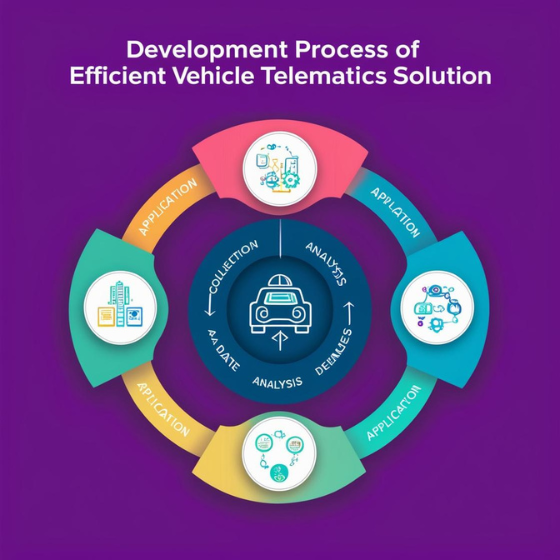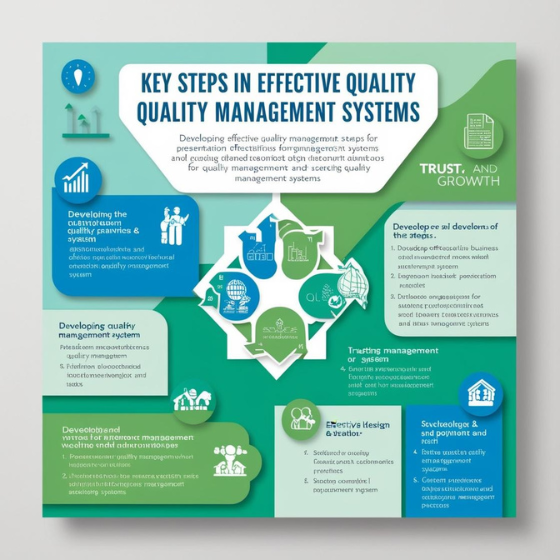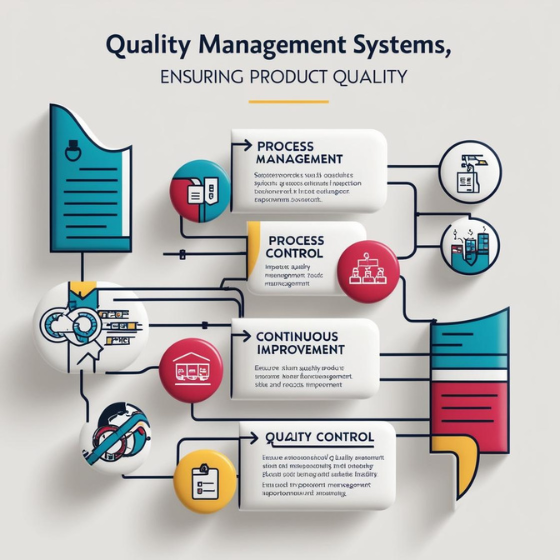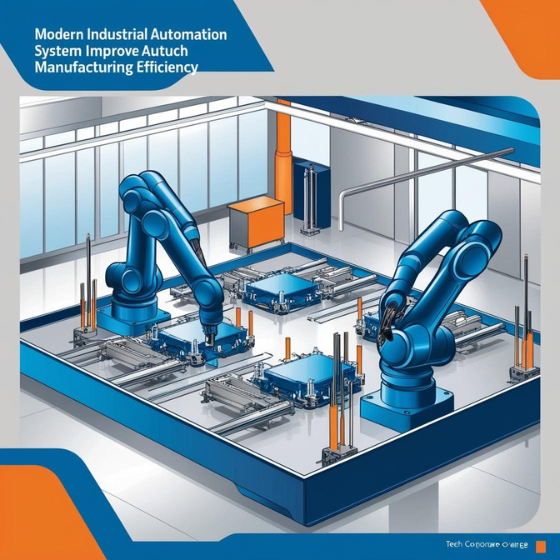Developing Efficient Vehicle Telematics Solutions
In today’s fast-paced world, managing a fleet efficiently requires more than just tracking vehicles. Vehicle telematics solutions have emerged as a powerful tool to streamline fleet management, improve safety, reduce costs, and enhance overall operational efficiency. By using data-driven insights, telematics systems are transforming the way businesses monitor and manage their fleets.
In this blog, we will dive into how to develop an efficient vehicle telematics solution. You’ll learn about the essential components of these systems, the technologies involved, and best practices to maximize their potential. Whether you’re looking to optimize routes, track vehicle health, or improve driver behavior, telematics solutions can provide the tools to make it happen.
What is Vehicle Telematics?
Vehicle telematics combines telecommunications and vehicle tracking systems to gather and analyze data from vehicles. These systems collect a wide variety of data points such as GPS location, vehicle diagnostics, driver behavior, and fuel usage. By processing this data, fleet managers can make informed decisions that drive efficiency and safety.
Telematics solutions offer many benefits. For instance, they help with:
- Real-time location tracking: Monitoring vehicle movement, route efficiency, and delivery times.
- Vehicle health monitoring: Tracking engine performance, tire pressure, and fuel levels.
- Driver behavior analysis: Identifying issues like speeding, harsh braking, and unnecessary idling.
- Fleet performance optimization: Analyzing data to reduce costs and improve operational productivity.
Ultimately, telematics enables businesses to optimize fleet operations while minimizing risks and inefficiencies.
Key Components of a Telematics Solution
When developing a telematics solution, several key components need to be integrated to achieve optimal performance.
1. GPS Tracking for Real-Time Visibility
GPS tracking forms the backbone of any telematics system. By providing real-time data on vehicle locations, fleet managers can track movements and manage deliveries more effectively. With GPS tracking, businesses can:
- Optimize routes: Avoid delays caused by traffic or construction, ensuring timely deliveries.
- Monitor fleet efficiency: Track idle times and unused vehicles, reallocating resources as needed.
- Enhance customer service: Provide accurate ETAs and resolve issues quickly based on real-time information.
This level of visibility allows fleet managers to make decisions in real-time, helping to improve service delivery and reduce inefficiencies.
2. Driver Behavior Monitoring
Telematics systems can track how drivers operate their vehicles. By analyzing behaviors such as speeding, harsh braking, and rapid acceleration, fleet managers can gain insight into driving habits that may be impacting safety, fuel consumption, and vehicle wear and tear.
By monitoring driver behavior, businesses can:
- Reduce accidents: Encouraging safer driving practices minimizes the risk of collisions and injuries.
- Improve fuel efficiency: Reducing aggressive driving and idling leads to significant fuel savings.
- Enhance driver training: Targeted coaching can help drivers adopt more efficient, safe driving behaviors.
As a result, businesses not only improve safety but also reduce fuel costs and extend the lifespan of their vehicles.
3. Vehicle Health Monitoring
Keeping vehicles in good condition is crucial for reducing downtime and maintenance costs. Telematics solutions can monitor various aspects of a vehicle’s health, such as:
- Engine diagnostics: Detecting potential issues early can prevent costly breakdowns.
- Tire pressure monitoring: Ensuring that tires are properly inflated reduces wear and enhances safety.
- Battery health: Monitoring battery levels and health can prevent unexpected failures.
By receiving alerts about potential issues before they escalate, fleet managers can schedule timely maintenance and reduce the risk of unplanned breakdowns. This helps businesses avoid disruptions and costly repairs.
4. Fuel Efficiency and Cost Reduction
Fuel is one of the largest ongoing expenses for fleet operators. Telematics solutions offer a way to track fuel usage and optimize consumption. Key features that help reduce fuel costs include:
- Route optimization: Identifying the most efficient paths based on real-time traffic data.
- Driver behavior monitoring: Discouraging harsh acceleration and braking, which consume more fuel.
- Tracking fuel consumption: Identifying patterns or inefficiencies that may signal potential issues.
By focusing on fuel efficiency, fleet managers can cut down on fuel costs while contributing to environmental sustainability.
Technologies Powering Telematics Solutions
To develop an efficient telematics solution, several technologies work together to collect, process, and transmit data in real-time. Let’s explore the key technologies behind these systems.
1. Internet of Things (IoT)
IoT technology is at the core of vehicle telematics. Sensors, GPS trackers, and other devices installed in vehicles collect and send data to a centralized platform. The data is then analyzed and presented to fleet managers for review. This real-time data is essential for monitoring vehicle performance, tracking locations, and ensuring the safety of the fleet.
The IoT allows for continuous monitoring and data collection, helping fleet managers take immediate action to address any issues or inefficiencies.
2. Cloud Computing
Cloud-based platforms are crucial for storing and processing the large amounts of data generated by telematics systems. Cloud computing allows fleet managers to access data from any device with an internet connection, providing them with real-time updates on fleet performance.
Additionally, cloud-based solutions make it easier to scale your telematics system as your fleet grows. These platforms also support data analytics, enabling businesses to make better, data-driven decisions.
3. Big Data and Analytics
Telematics solutions generate massive amounts of data, which can be overwhelming without the right analytics tools. Big data analytics helps to process and interpret this data, revealing actionable insights. For example, analytics can help identify:
- Patterns in driver behavior: Helping managers address inefficiencies and improve safety.
- Optimal maintenance schedules: Predicting when a vehicle is likely to need servicing.
- Operational inefficiencies: Identifying areas where fuel consumption or time can be reduced.
By using advanced analytics, fleet managers can make informed decisions that improve the overall performance of their fleets.
4. Artificial Intelligence (AI)
Artificial intelligence enhances telematics by enabling predictive maintenance and automated decision-making. AI-powered systems can predict when a vehicle might experience a failure based on historical data, allowing fleet managers to take proactive action before costly breakdowns occur.
Moreover, AI can help optimize routing and fuel efficiency by analyzing historical and real-time data to determine the best paths for drivers to take.
Best Practices for Developing Telematics Solutions
When developing a vehicle telematics solution, it’s important to follow best practices to ensure the system is effective and sustainable.
1. Prioritize User-Friendly Interfaces
While the backend systems collect and analyze vast amounts of data, the front-end interface must be user-friendly and intuitive. A clear, easy-to-navigate dashboard helps fleet managers quickly access the information they need, whether it’s a summary of fleet performance or a real-time alert about an issue.
2. Ensure Scalability
As your fleet grows, so should your telematics system. It’s essential to choose a solution that can handle an increasing volume of vehicles and data without sacrificing performance. A scalable system ensures that you can continue to rely on your telematics solution as your business expands.
3. Implement Strong Security Measures
Telematics systems handle sensitive data, so data security is critical. Implement encryption and secure authentication protocols to protect data from unauthorized access. Regular security audits can also help identify potential vulnerabilities and prevent cyberattacks.
4. Customize the System for Your Needs
Telematics systems should be tailored to your specific fleet needs. Whether you need additional sensors for specialized vehicles or custom reporting features, ensure your system is adaptable to your business requirements. Customization ensures that your telematics solution delivers maximum value.
5. Continuously Monitor and Improve
Telematics solutions provide ongoing data that can be used to drive continuous improvements. Regularly review the insights provided by the system and use them to make adjustments to routes, driving behavior, or maintenance schedules. Continuous monitoring ensures that your fleet operations are always optimized.
Conclusion
An efficient vehicle telematics solution can help businesses reduce costs, improve safety, and enhance fleet performance. By focusing on key components like GPS tracking, driver behavior monitoring, and vehicle health management, fleet operators can make data-driven decisions that drive long-term success.
At Sodio, we specialize in developing custom telematics solutions tailored to your needs. Our team can help you optimize your fleet management and improve efficiency. Contact us today to learn how we can help you develop a smarter, more efficient telematics system for your fleet.







